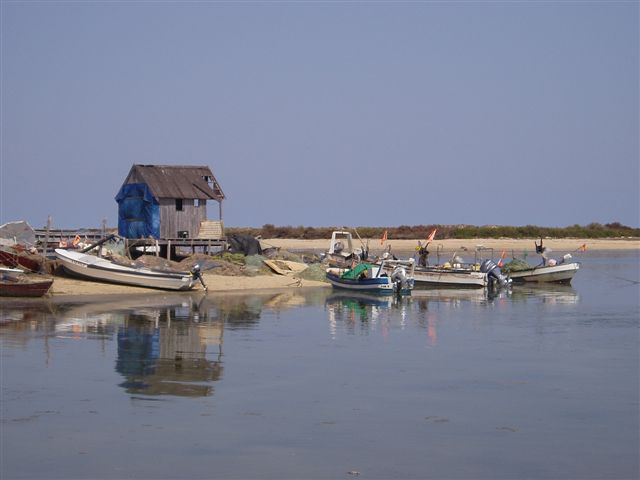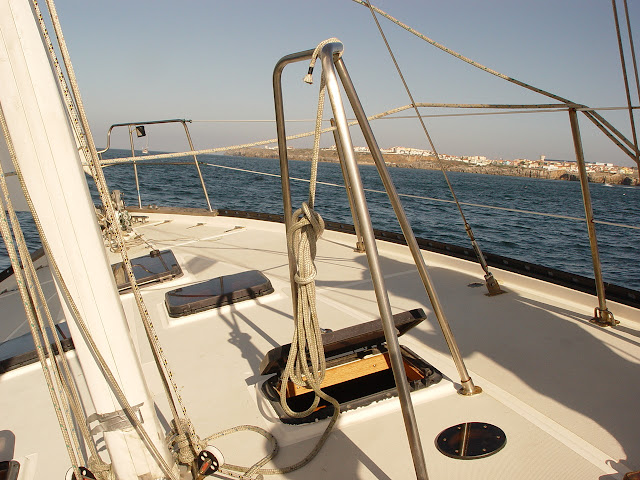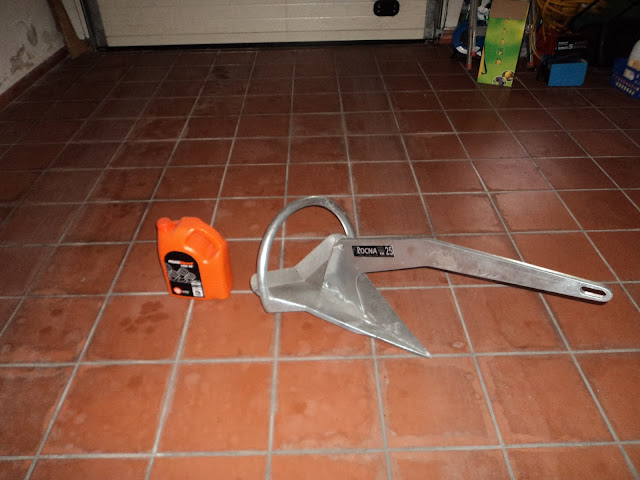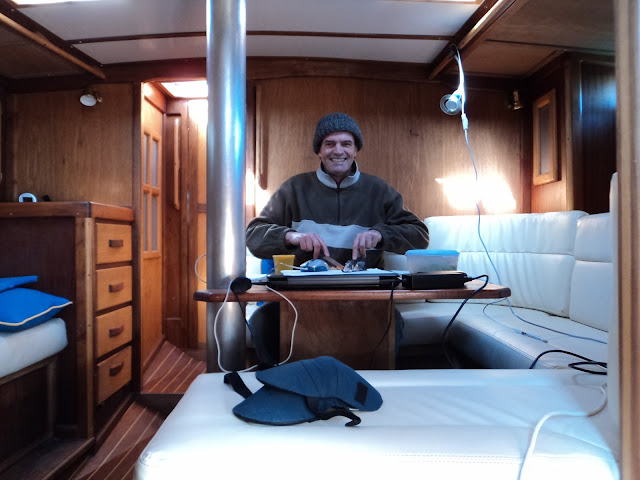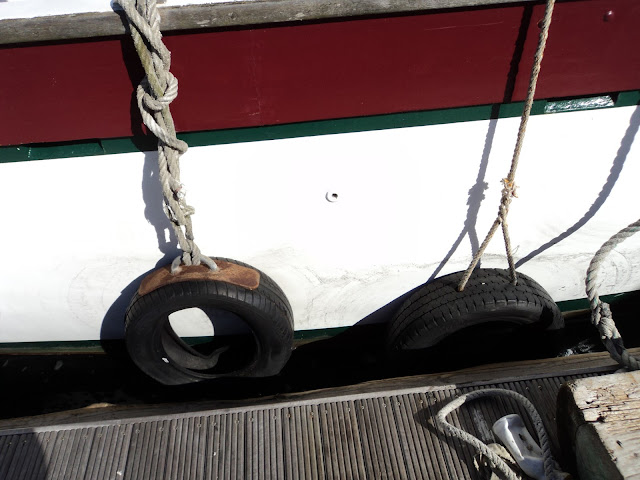Someone Googled "can a Corbin 39 be sailed by one person" and landed on my site.
Mr. Googler, if you're still reading my blog, the answer depends on the specific Corbin and on the sailor.
I don't want to sound like a hero, because I'm not, but I've sailed Jakatar solo (i.e. the only person aboard) in howling winds more than a few times. And I mean sailing, not motoring. Sailing to the Algarve in summer means sailing past Cabo Raso (near Cascais) and Sagres (the very first town on Algarve's south-west coast).
In these two notorious spots, the wind can go from 5 knots to 40 knots in a wink of an eye almost always during mid to late afternoon on warm days when wind convection currents form storm-like conditions on otherwise beautiful sunny days.
Three years ago my jib exploded while sailing into Cascais flying the jib, boomed staysail and 2 reefs on the main. What's my excuse? The jib was getting old and I secretly wanted a new sail with roller furling. That's a lie, in reality I was being smug about how the boat could handle it and also being cruel to my sails.
Here's the old sail plan before I installed a furler and a larger genoa (44 m2).
Sailing solo and staying safe is all about reefing or reducing sail area. If you can do that, you're in business.
How did I reef by myself without an autopilot or furling?
All lines lead back to the cockpit, including my secret weapons: downhauls on the jib (pre-furler) and main.
When the wind piped up gradually, I sailed as close to the wind as possible, eased the main sail and then, in quick cartoon-like maneuvers, I'd release the main halyard until it reach one of the red marks (reef points), while keeping one hand on the wheel and the other on the line jammer. Then I'd pull in the luff line, steer, pull steer...and so on. It took a while and that's why I sailed at least 3 miles from shore.
If the wind came in a blast, to hell with that pussyfooting! Point it into the wind fast, all sails flogging like mad (a noise I absolutely despise), release the jib halyard and pull on the downhaul like mad while also pulling in the sheet to keep the sail clew from falling overboard, then tie both lines down.
Whew, she's down and I'm sweating by now. But I'm no longer pointing into the wind, instead I'm sailing again in whatever direction the wind caught me. Damn, turn her into the wind once again and sweat some more reefing the main in the manner already described above. By now, I've got a couple of bloody fingers, my heart is racing and I could sure use a drink.
Now that I have roller furling and an auto pilot, I yawn, reef, and yawn some more - almost too easy, but I don't miss bleeding fingers at all.
Mr. Googler, if you're still reading my blog, the answer depends on the specific Corbin and on the sailor.
I don't want to sound like a hero, because I'm not, but I've sailed Jakatar solo (i.e. the only person aboard) in howling winds more than a few times. And I mean sailing, not motoring. Sailing to the Algarve in summer means sailing past Cabo Raso (near Cascais) and Sagres (the very first town on Algarve's south-west coast).
In these two notorious spots, the wind can go from 5 knots to 40 knots in a wink of an eye almost always during mid to late afternoon on warm days when wind convection currents form storm-like conditions on otherwise beautiful sunny days.
Here's the old sail plan before I installed a furler and a larger genoa (44 m2).
Sailing solo and staying safe is all about reefing or reducing sail area. If you can do that, you're in business.
How did I reef by myself without an autopilot or furling?
All lines lead back to the cockpit, including my secret weapons: downhauls on the jib (pre-furler) and main.
When the wind piped up gradually, I sailed as close to the wind as possible, eased the main sail and then, in quick cartoon-like maneuvers, I'd release the main halyard until it reach one of the red marks (reef points), while keeping one hand on the wheel and the other on the line jammer. Then I'd pull in the luff line, steer, pull steer...and so on. It took a while and that's why I sailed at least 3 miles from shore.
If the wind came in a blast, to hell with that pussyfooting! Point it into the wind fast, all sails flogging like mad (a noise I absolutely despise), release the jib halyard and pull on the downhaul like mad while also pulling in the sheet to keep the sail clew from falling overboard, then tie both lines down.
Whew, she's down and I'm sweating by now. But I'm no longer pointing into the wind, instead I'm sailing again in whatever direction the wind caught me. Damn, turn her into the wind once again and sweat some more reefing the main in the manner already described above. By now, I've got a couple of bloody fingers, my heart is racing and I could sure use a drink.
Now that I have roller furling and an auto pilot, I yawn, reef, and yawn some more - almost too easy, but I don't miss bleeding fingers at all.




